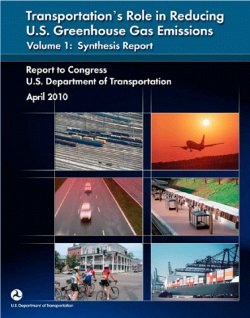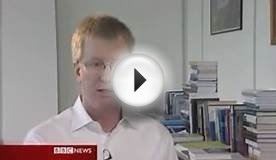Causes of climate change and global warming
 Figure 1.3: This image represents one major category of proximate cause of climate change: the emission of greenhouse gases from transportation activities.
Figure 1.3: This image represents one major category of proximate cause of climate change: the emission of greenhouse gases from transportation activities.
The human causes of climate change fall into two categories: proximate causes and driving forces. Proximate causes are the human activities that directly cause climate change. There are two overarching categories of proximate causes: land transformation and industrial processes. People transform the land surface in many ways, with some important types being deforestation, agriculture, urbanization, mining, reservoir building, land draining, and transportation network building. Industrial processes include energy production, transportation, manufacturing, construction, waste disposal, petrochemical, mineral, and food processing, and many other activities. All of these activities change the flux of energy and mass to the climate system.
These images represent the five driving forces of climate change: population growth (represented by innumerable houses); technological development (represented by a driver of climate mitigation, a wind turbine); economic growth (represented by the explosive economic development of Shanghai, China); attitudes and beliefs (represented by a cultural icon, McDonald’s golden arches, which denotes attitudes and beliefs about food, convenience, and more); and institutions (represented by the Supreme Court building in Washington, DC).
Driving forces of climate change are complex, interactive actions and rationales that give rise to proximate causes. In other words, driving forces are the underlying reasons why people engage in various activities. There are five driving forces: population growth, technological development, economic growth, institutions, and attitudes and beliefs. Understanding the driving forces helps to answer questions such as, why do people drive cars to work (a proximate cause of climate change) when they could walk, ride a bike, or take a bus?
Lesson 2 of this course looks more deeply into proximate causes and driving forces. It also gives some background on greenhouse gas emissions and mitigation, thereby setting up the succeeding lessons on energy emissions and mitigation, transportation emissions and mitigation, local emissions and mitigation, and climate policy.


|
On thin ice: drowning polar bears? Stranded walrus calves? A Science World editor travels north to report on the effects of global warming.: An article from: Science World Book (Thomson Gale) |
|
'Warming of the climate system is unequivocal': highlights of the fourth IPCC Assessment Report.(The Intergovernmental Panel on Climate Change)(Report): An article from: UN Chronicle Book (Thomson Gale) |